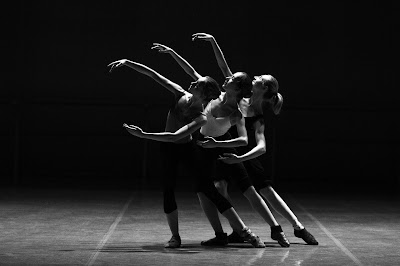Posting my IB dance investigation - Dance Saturday
Hello everybody and welcome back to another blog post,
Now that I've finished the IB, I thought it would be a good idea to share my coursework with you guys, since I did spend a lot of time writing each of my essays and I wanted to share all my hard work with you. Today I am publishing my IB dance investigation where I compared two dance styles to see what was similar and what was different about each of them. Usually, this report would come with pictures but for the purpose of not getting copyrighted, I didn't include them today. But I do still hope you enjoy reading it because I certainly did, when I looked back at it.
Introduction:
In
this report I will compare the similarities and differences between street commercial
and capoeira dance. I will be exploring the origins, the culture, and the
technique of street commercial dance and capoeira in order to determine how
these dance styles have evolved and grown in popularity over time. The purpose
of this report is to see if the evolution and emergence of these two dance
styles either resemble or differ to each other.
Historical
context:
Street commercial dance has its origins in
street dance and hip-hop. Prior to the 1970s, New York had an affluent economy,
with a profitable industry that gave many jobs to people particularly of
African American and Hispanic descent. However, during the 1970s, industry
became less profitable when more wealthy white Americans left the city, fearing
the takeover of black communities. “The Burning of the Bronx” saw wealthy white
Americans burning their own buildings to create a profit or abandoning them
completely
Capoeira was created during the Atlantic
Slave Trade in 1516, when West African slaves were brought to Brazil by
Portuguese colonists
Hip-hop and street (the origins of street commercial
dance) and capoeira, were both dance styles that were created by artists of
African descent, but capoeira was formed during the Atlantic slave trade in the 1600s whereas
hip-hop was formed later in the timeline during a time of civil unrest in the
1970s. In its early beginnings, capoeira
was designed so that partners could challenge each other, and practise their
cultural traditions. In the past capoeira was considered to be more of a sport because
it was practised as a game. In contrast, in the past hip-hop and street were more
closely linked to dance because the styles involved creativity and musicality. Capoeira
and hip-hop were both street dance styles that both involved elements of battle
but hip-hop was battled on the street in an artistic way, rather than a
physical way like with capoeira.
Current context:
Hip-hop dance evolved from the streets to the
stage through the birth of MTV, an American cable channel that originally displayed
music videos from different artists in 80s popular culture
Capoeira changed from a secretive performance
to Brazil’s cultural icon. After the abolition of slavery in May of 1888, Brazil
became poor very quickly because the slave industry had brought the Portuguese
lots of money. Criminal violence became more of an issue in Brazil because of
the national poverty. An influx of gang members began to practise capoeira to
defend themselves amid the street violence and as a result, capoeira was
officially outlawed by the Brazilian government in 1890
Street
commercial dance has evolved from its traditional roots because it has moved
from the streets to the studio and has grown to include other technical
elements from other styles of dance like jazz. In comparison, capoeira has
remained very traditional. Although Mestre Bimba created the new style of
capoeira regional, he worked hard to re-instate capoeira back into Brazilian
culture and get people to respect this traditional art form. Nowadays, street commercial
dance is created in the professional environment for the internet stage and
capoeira is created in the outdoor setting for the Brazilian audience and
tourists visiting the country.
Dance elements:
Street commercial is a style that combines other styles of dance such as street, jazz, and ballet
In capoeira, one dancer must be prepared to attack
whilst the other must be prepared to respond with an evasion of that movement. Examples
of attacks include kicks, headbutts, knees, slaps, and punches and these movements
whilst initiated by a dancer, are never carried out fully so that the dancer comes
into direct contact with the other. Instead, the other dancer evades the
movement depending on the type of attack that is delivered. Examples of
evasions include sweeps, dodges, cartwheels, handstands, and roles
Capoeira is a style that is more closely
linked to sport than street commercial because of its history of being
recognised as a martial art by the West African slaves and disguised as a dance
style. Therefore, in capoeira, dancers learn a mixture of acrobatics, control
and methods of self-defence which is similar to how a martial art is traditionally
practised. In contrast, street commercial combines key street dance movements
like isolations and body ripples with some of the technical elements of
fundamental dance styles like jazz and modern. In both street commercial and
capoeira, dancers wear loose, comfortable attire to carry out the strong, power
movements that have become a recognisable feature of both styles of dance.
However, choreographers in street commercial create routines for their dancers to
copy whereas in capoeira, dancers are not confined to set movements and there
is more of an encouragement on improvisation.
Comparison of two dance extracts:
I have chosen to analyse a section of capoeira dance that was performed at the 2014 Afro-Brazilian Capoeira Carnival by the group Axé Capoeira, https://youtu.be/dx-yJnJmnmo (the timestamp is 0.58 - 1.27). I will compare this with a section of street commercial dance performed by Kyle Hanagami that was performed at the Fair Play Dance Up winter school in 2014 https://youtu.be/MET9_2pXTmQ (the timestamp is 0.44 - 1.01). I will focus on the use of actions and dynamics in both extracts.
Actions:
Capoeira contains a lot of set acrobatic movements whereas street commercial dance involves a lot of style and interpretation. For example, in the video, the upstage capoeira dancer was seen performing a handstand into a cartwheel. He placed the palms of his hands on the floor, kicking his left leg upwards, holding the position in the air for a few seconds, before leaning to the left to dismount. In response, his downstage partner performed a handstand where he kicked both of his legs upwards, placing both of his hands on the floor, holding the position in the air. Both dancers sequenced their acrobatics differently, but the choice of acrobatic movement remained the same. In contrast, Hanagami in the street commercial is seen performing a combination of isolations, extending and contracting his chest at different angles to make his isolations look unique. Street commercial is centred around style and personality which is why a degree of interpretation is accepted. In contrast, capoeira routines rely on its set movements, so the choice of movement remains the same.
Dynamics:
However, despite their differences, street
commercial and capoeira are also very similar because they both use a very
powerful dynamic, due to the strong beats and tones of the music that is used
in both dance styles. In the capoeira video, the dancers carry out a series of
kicks (armadas), accelerating each one that they perform as the tempo of the music
changes. Their transition from slow stunts to fast-paced kicks, enhances the
musicality of their performance, and helps to create a very powerful dynamic
that is interesting for the audience to watch. Similarly, in the street
commercial video, Hanagami transitions from fast chest isolations to slower more
stylistic hand gestures, which enables him to articulate and separate his actions
and create different compositions with the music. The use of varied speed in
both the capoeira and the street commercial dance video, helps to create this
strong and powerful dynamic.
Actions:
The actions in street commercial dance and capoeira are performed and organised very differently. However, in the capoeira and street commercial videos, the dancers both used very angular arm movements. In the street commercial video, Hanagami kept his elbows up and open to the audience for certain pieces of the choreography. For example, in the extract, Hanagami placed his left hand behind his head and his right hand on his chin to sustain the articulated, angular arm movement. Whilst in the Ginga, the transitioning rock step to the back, the capoeira dancers kept their arms up in front of their chest, in a very angular position. These angular movements allowed the dancers to remain in an active stance in between different pieces of choreography, enabling the dancers to look continuously strong and masculine, throughout their performance which is a key aspect of both dance styles.
Capoeira
and street commercial dance differ in terms of technique as capoeira is a multidimensional
dance style that contains a lot of set acrobatic movements whereas street
commercial is a style that involves interpretation and engagement with the
audience. However, despite this, capoeira and street commercial are also very
similar because they both have a very strong dynamic and articulated arms, because
both dance styles create movement to the strong beats of the music.
Bibliography
4, C. (2020, November 11). Dance Around the World.
New York.
Arts, D. (n.d.). List of Fundamental Capoeira
Movements. Retrieved from Dende Arts:
https://dendearts.com/list-of-fundamental-capoeira-movements/
Beyoncé. (2011, May 18). Run the World (Girls)
(Official Video).
Flood, J. (2019, May 3). Why the Bronx burned.
Retrieved from New York Post:
https://nypost.com/2010/05/16/why-the-bronx-burned/
Goncalves-Borrega, J. (2017, September 21). How
Brazilian Capoeira Evolved From a Martial Art to an International Dance Craze.
Retrieved from Smithsonian Magazine: https://www.smithsonianmag.com/smithsonian-institution/capoeira-occult-martial-art-international-dance-180964924/#:~:text=Mestre%20Bimba%20was%20born%20in,official%20recognition%20by%20the%20government
Hebblethwaite, P. (2013, November 21). How
Michael Jackson's Thriller changed music videos for ever. Retrieved from
The Guardian:
https://www.theguardian.com/music/2013/nov/21/michael-jackson-thriller-changed-music-videos
Howcast. (2012, May 2). How to Do the Ginga |
Capoeira.
Jamie. (2019, February 16). The History Of MTV
& Birth Of The First Music Videos. Retrieved from Everything 80s
Podcast: https://www.everything80spodcast.com/the-history-of-mtv/
Kingsford-Smith, A. (2021, July 7). Disguised in
Dance: the Secret History of Capoeira. Retrieved from The Culture Trip:
https://theculturetrip.com/south-america/brazil/articles/disguised-in-dance-the-secret-history-of-capoeira/
Loughlin, L. (2021, January 28). What are the
differences between "street dance" "hip-hop" and
"commercial" dance classes? . Retrieved from Elevate Arts UK:
https://elevateartsuk.co.uk/differenttypesofdanceclass/
Murphy, S. (2007, March 7). All you need to know
about: capoeira. Retrieved from The Guardian:
https://www.theguardian.com/lifeandstyle/2007/mar/17/healthandwellbeing.features4
Team, R. B. (2020, January 9). History of Break
Dancing: A breakdown of important events. Retrieved from Red Bull:
https://www.redbull.com/us-en/history-of-breakdancing#:~:text=Some%20say%20the%20breaking%20we,determined%20to%20be%20the%20winner
University, K. I. (n.d.). Watts Rebellion (Los
Angeles). Retrieved from King Institute: Stanford University:
https://kinginstitute.stanford.edu/encyclopedia/watts-rebellion-los-angeles
What Do Hip-Hop Dancers Wear? (n.d.). Retrieved from Dance Poise: https://dancepoise.com/hip-hop-dance-clothes
Zylstra, M. (2018, January 9). The real origins
of capoeira? Retrieved from eyes4earth.org:
http://eyes4earth.org/2018/01/origins-of-capoeira/
Have you ever heard of capoeira dance before? Let me know in the comments below and I'll be sure to reply to them. I ♡ hearing from you!


Comments
Post a Comment
Thanks for leaving your comments! I really enjoy reading your positive and constructive messages. They really make my day! 💜